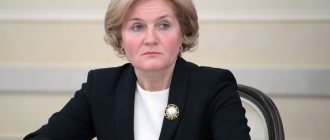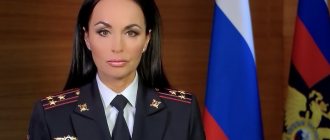Childhood and youth
Natalya Sergunina is a native Muscovite, she was born in the capital on August 22, 1978. However, her main childhood memories are not connected with the capital. Natalya's father was a military judge, and the family had to travel a lot and often around the country due to duty. However, moving from one military district to another had virtually no effect on the girl’s studies. Wherever she found herself, she always studied diligently.
Finally returning to the capital, she graduated with honors from school number 325 and received a silver medal. There was practically no thought about which university and which faculty to continue studying at. Considering that not only Natalya’s father, but also other members of her family worked in law, the documents were submitted to Moscow State University. M.V. Lomonosov at the Faculty of Law. Five years later, Sergunina left the university with a honors diploma in her hands.
The beginning of a long journey
The promising young specialist was given a start in life by her supervisor, who recommended that she try her hand at the legal department of the Ministry of Property. Natalya’s business and professional qualities allowed her to go from a consultant to a deputy head of one of the departments during her 4 years of work in the ministry.
Natalya Sergunina. Photo: Press service
In 2004, the Ministry of Property of the Russian Federation was reorganized into the Federal Agency for State Property Management. The changes did not spare Sergunina, whose sphere of activity began to concern not only purely legal issues, but also management tasks. Subsequently, Natalya Sergunina more than once recalled that the fundamental education received within the walls of Moscow University helped her cope with her changed responsibilities.
Work in the Moscow Government
In 2010, Sergei Sobyanin literally on the second day after his appointment began forming a new management team for the Moscow government. Several young specialists, but already with sufficient management experience, were invited from federal ministries. Thus, Natalya Sergunina took the post of deputy mayor, head of the City Property Department. A year after joining the Moscow Government, she became vice-mayor for land and property relations. In 2013, after the unification of the economic and land-property complexes of the capital, Sergunina headed the work of the new department.
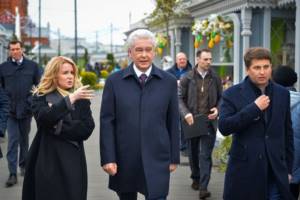
Natalya Sergunina in the mayor's team
In 2010, Natalya Sergunina’s career took another turn - she received an offer to join the Moscow Government. Despite the fact that at that time she already held the post of deputy head of the Federal Property Management Agency, the reflection was short-lived, and at the end of October 2010, Sergunina headed the Property Department of the city of Moscow. A year later, she became deputy mayor for land and property relations.
In 2013, certain changes took place in the structure of the Moscow Government; some departments were reorganized and their functions were redistributed. For Natalya Alekseevna, this meant another expansion of her areas of responsibility, since in addition to the well-known land and property complex, she began to oversee the economic block of the capital’s government.
The next career appointment took place in mid-September 2018, when Sergunina, while remaining in the position of deputy mayor of the capital, headed the Office of the Mayor and Government of Moscow.
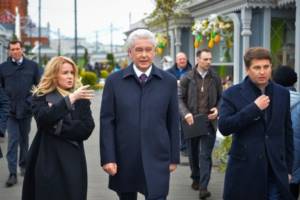
Natalia Sergunina and Sergei Sobyanin. Photo: Press service
Contribution to the development of the Moscow economy
Having assumed the position of Deputy Mayor and Head of the Property Department of the City of Moscow in October 2010, Natalya Alekseevna began strengthening the economy and increasing the attractiveness of the capital for investors. Among the main objectives were: ensuring the sustainable development of the capital's economy, supporting entrepreneurship and reducing administrative barriers to business, stimulating the development of enterprises in the real sector and the service sector, as well as the spread of event tourism. All this led Moscow to the Financial Times ranking, where in 2021 it was listed among the top 5 most attractive cities in Europe for foreign investment.
Investment climate
Over the years of her work in the Moscow government, Natalya Sergunina took part in solving many important problems for the city, one of which was to increase the investment attractiveness of the Russian capital. The results of this work can be considered quite successful:
- compared to 2010, revenues to the Moscow treasury increased by almost 90 percent;
- dependence on tax payments from oil and gas companies decreased from 17 to 4 percent;
- the total volume of investments in the capital's economy increased by one and a half times;
- the volume of investments in fixed assets reached a record 2 trillion rubles in the modern history of Moscow.
The results of this work are recognized as successful not only by domestic but also by foreign experts, who at the end of 2018 included the Russian capital in the list of the five most attractive European megacities for investors. And in the “Eastern Europe” section, Moscow took first place in the ranking.
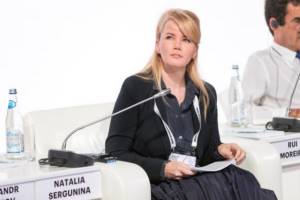
Political figure Natalya Sergunina. Photo: Press service
Good results were also achieved in changing approaches to public procurement. According to representatives of the expert community, today Moscow has one of the most transparent systems in the world, which allows you to use budget money with maximum efficiency, saving, on average, one ruble out of three.
Moscow tourist
A lot has been done in recent years to increase the tourist attractiveness of Moscow. And here statistical calculations are more eloquent than any words:
- over 9 years, the flow of tourists to the Russian capital has doubled;
- at the end of last year, Russian and foreign tourists spent more than 850 billion rubles in Moscow, and their total contribution to city budget revenues amounted to 118 billion;
- during the World Cup, 4.5 million tourists visited Moscow, and hotel occupancy reached 90 percent;
- but what is much more important is that the Russian capital has become a recognizable tourist brand, and the average annual occupancy of Moscow hotels is now comparable to Paris, Amsterdam and London.
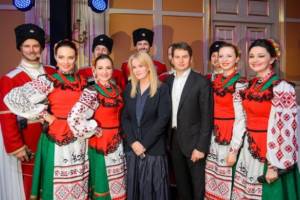
Natalya Alekseevna Sergunina (center). Photo: Press service
Winter tourist capital
Another result of the work of the Moscow Government, and in particular Natalya Sergunina, was a significant increase in tourist flow (twice compared to 2010). The annual expenditures of guests of the Russian capital exceeded a trillion rubles, and the direct contribution of the tourism industry to the city budget reached 147 billion rubles.
The 2018 FIFA World Cup became a serious test of Moscow’s viability as one of the world’s tourist capitals. And it must be said that the city passed this test brilliantly. In total, about 4.5 million people visited Moscow during the 2018 World Cup, more than half of whom were foreigners. The occupancy rate of hotels and inns reached 90 percent, and some accommodation facilities had no vacancies at all, even the most expensive ones. The overall economic effect of the Championship turned out to be quite significant for the city: the Moscow budget in total was able to receive about 15 billion rubles in additional income.
But what is even more important is that Moscow was able to awaken such a strong interest in foreign guests during the football holiday that six months later, during the colorful Journey to Christmas festival held in the capital, hotels were no less filled, and Moscow was completely full. rightly began to be called the winter tourist capital of Europe.
Exhibition of achievements
With the participation of Natalya Sergunina, the revival of VDNKh began, the territory of which fell into decay in the 90s of the last century, and many buildings that had not seen repairs since their construction began to collapse. Restoration and restoration work started in 2014. They began with the establishment of basic order - the removal of hundreds of tons of garbage and the elimination of unauthorized trade objects.
As for the historical pavilions, the issue of their restoration was approached extremely delicately - the work was carried out in full accordance with the design documents. As a result, many buildings were restored to their original appearance. The results of this work were to the liking of Muscovites: by the end of 2021, attendance at VDNKh reached 30 million people.
New life at VDNKh
With the participation of Natalya Sergunina, VDNKh was transformed, the territory of which had fallen into disrepair by the beginning of the 21st century: many historical pavilions, which had not been renovated since their construction, were in a deplorable state, and the exhibition territory itself was in no way conducive to a comfortable pastime.
The revival of one of the calling cards of the Russian capital began with a major cleaning. They removed garbage and unauthorized structures, and stopped selling consumer goods in the pavilions. At the same time, landscaping work was going on: old flower beds were recreated and new ones were laid out, pedestrian routes were laid out, and children's and sports grounds were built.
Starting in 2021, restorers began to join the restoration work at VDNKh. With their help, the pavilions, known both in Russia and far beyond its borders, regained their original appearance. Today, VDNKh is one of Muscovites’ favorite places to spend leisure time, and the best assessment of the quality of restoration work was the record attendance at the exhibition site: more than 30 million people a year.
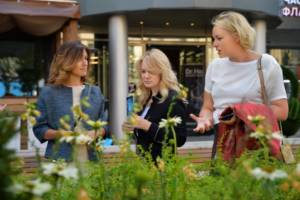
Natalya Sergunina in the company of colleagues
Moscow festival
In 2021, thanks in part to Natalya Sergunina, a new powerful cultural brand “Moscow Seasons” appeared in the capital. He united the capital’s rich festival program and brought it to a common denominator. The main idea behind Moscow Seasons is that Moscow is beautiful no matter what time of year it is outside.
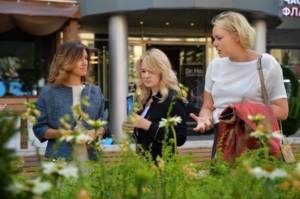
Vice-Mayor Natalya Sergunina with colleagues. Photo: Press service
The Russian capital is capable of equally surprising and delighting in winter, spring, summer or autumn. At any time of the day, any person will definitely find where to go, what to see and what to do. At the end of last year, all events of the Moscow Seasons cycle accommodated more than 65 million people. This is a remarkable indicator even against the backdrop of such world cultural capitals as Edinburgh, Barcelona and London.


